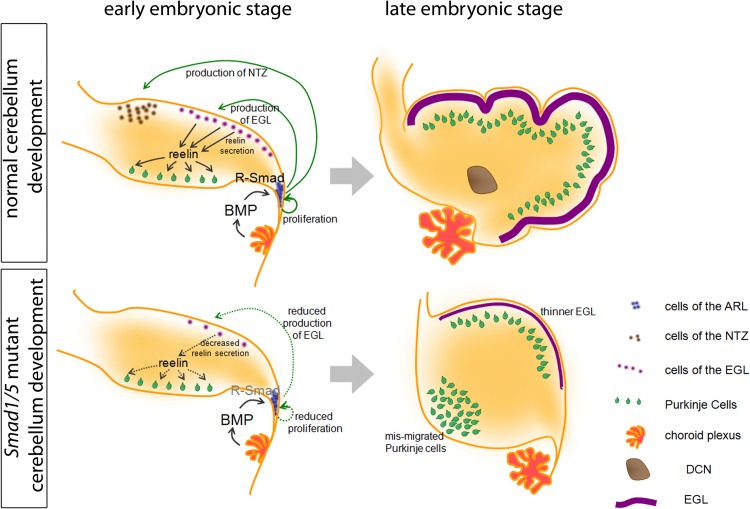Fig 7.
Schematic diagram showing the developmental alterations in the Smad1/5 mutant. The development of the normal and mutant cerebella is shown. In the normal cerebellum, the BMP ligands are secreted from different origins, including the choroid plexus. The BMP signals regulate the proliferation of ARL progenitors and the specification of ARL progenitors into NTZ and EGL populations. The granule cells of the EGL then secrete reelin, which signals Purkinje cell migration. At the end, the proper EGL, DCN, and Purkinje cell plate are formed. In the Smad1/5 mutant cerebellum, the ARL cannot respond to BMPs due to the loss of R-Smad, which results in the reduced proliferation of ARL progenitors, loss of the NTZ, and a reduced number of granule cell precursors in the EGL. The reduced EGL then leads to a lower level of reelin and results in a Purkinje cell migration defect. At the end, loss of DCN, a thinner EGL, and mismigration of Purkinje cells in the Smad1/5 mutant cerebellum resulted.

